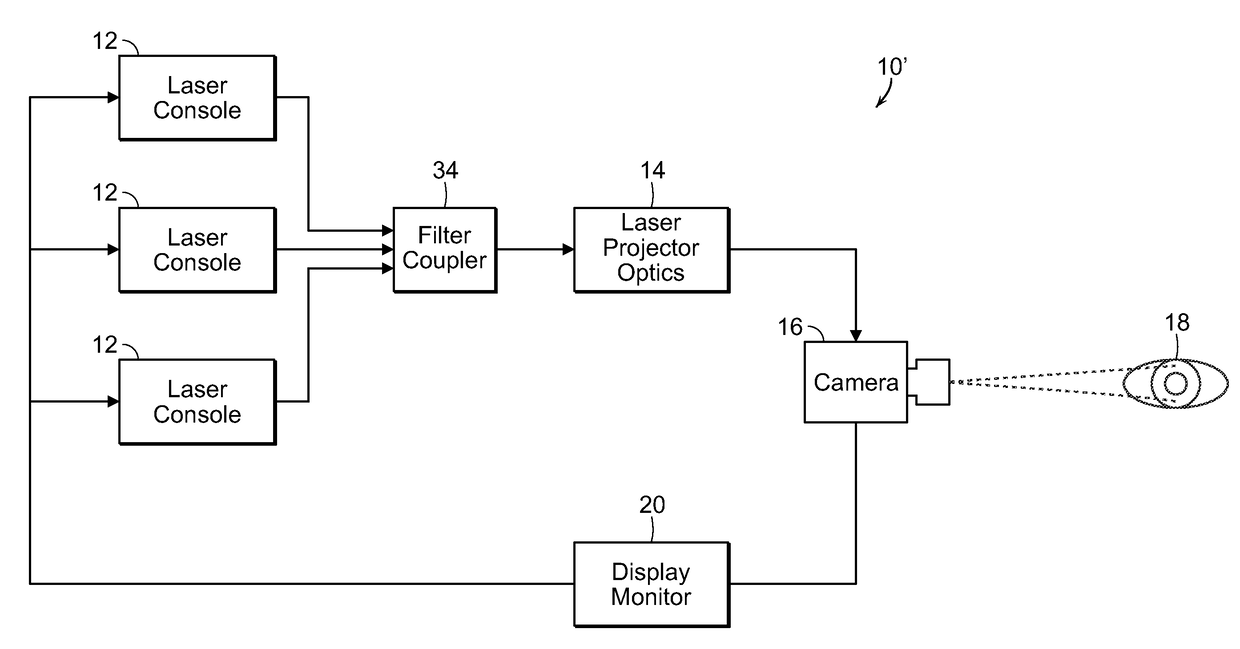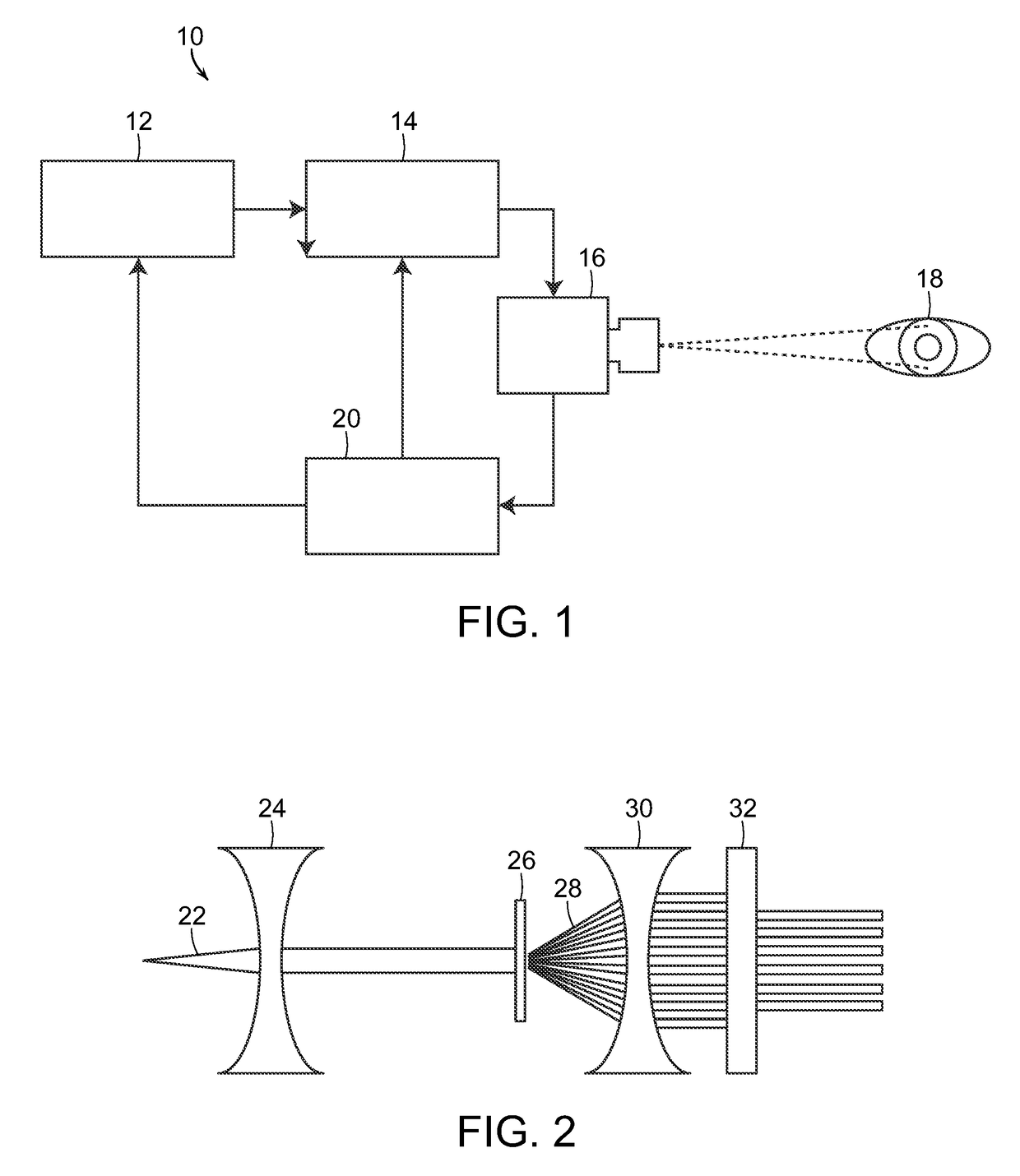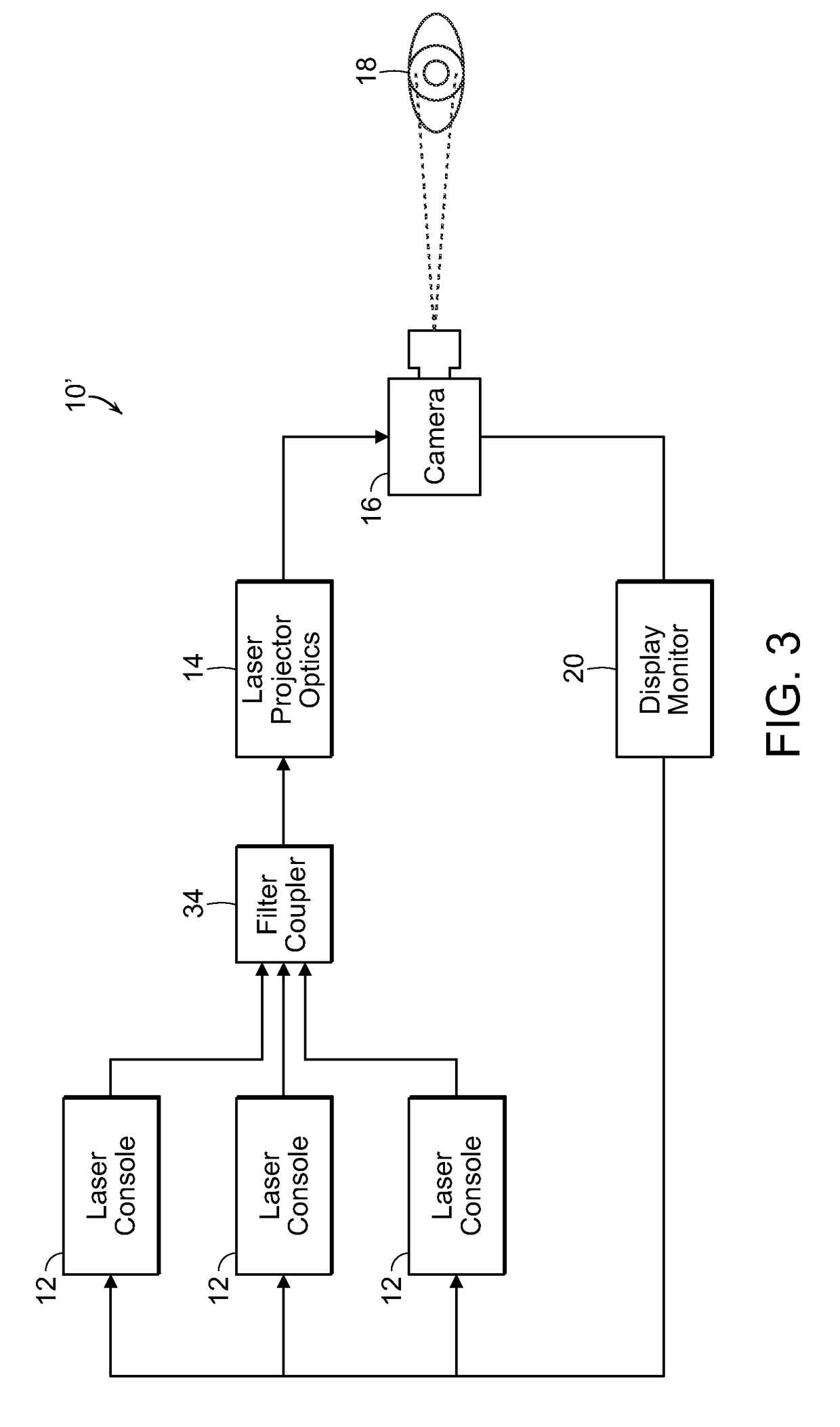Process for providing protective therapy for biological tissues or fluids
a biological tissue and fluid technology, applied in the field of biological tissue or fluid treatment, can solve the problems of major public health problems, disease worsening, difficult gene therapy, etc., and achieve the effect of facilitating protein repair
- Summary
- Abstract
- Description
- Claims
- Application Information
AI Technical Summary
Benefits of technology
Problems solved by technology
Method used
Image
Examples
Embodiment Construction
[0052]The present invention, as more fully described and illustrated herein, resides in processes and systems that provides protective therapy for biological tissues or fluids having a chronic progressive disease or at a risk of having a chronic progressive disease. In accordance with the invention, a pulsed energy source having energy parameters including wavelength or frequency, duty cycle and pulse train duration selected so as to raise a target tissue or bodily target fluid temperature up to eleven degrees Celsius for a short period of time of seconds or less, while maintaining an average temperature rise of the tissue or target fluid over several minutes at or below a predetermined level so as not to permanently damage the target tissue or target fluid. The pulsed energy source is applied to the target tissue or target fluid which is either determined to have a chronic progressive disease or at a risk of having a chronic progressive disease. This determination may be made befor...
PUM
 Login to View More
Login to View More Abstract
Description
Claims
Application Information
 Login to View More
Login to View More - R&D
- Intellectual Property
- Life Sciences
- Materials
- Tech Scout
- Unparalleled Data Quality
- Higher Quality Content
- 60% Fewer Hallucinations
Browse by: Latest US Patents, China's latest patents, Technical Efficacy Thesaurus, Application Domain, Technology Topic, Popular Technical Reports.
© 2025 PatSnap. All rights reserved.Legal|Privacy policy|Modern Slavery Act Transparency Statement|Sitemap|About US| Contact US: help@patsnap.com



